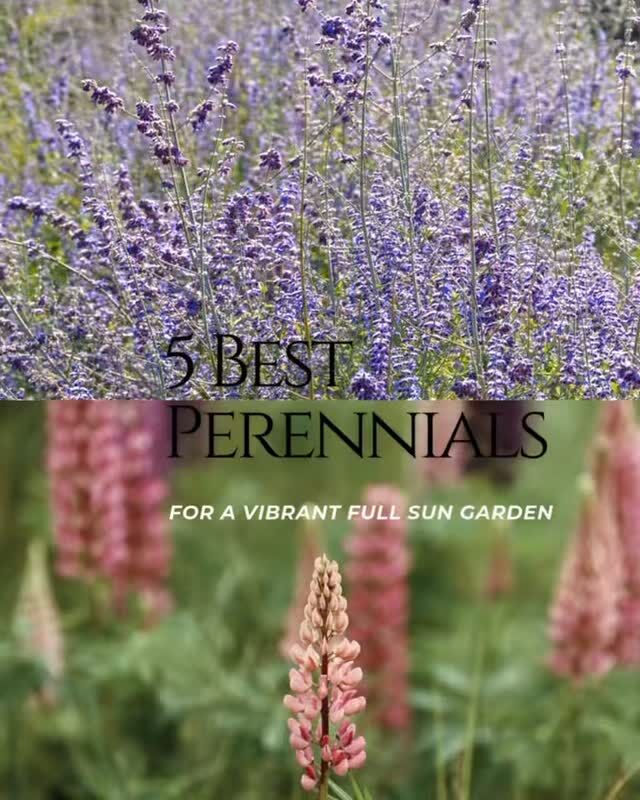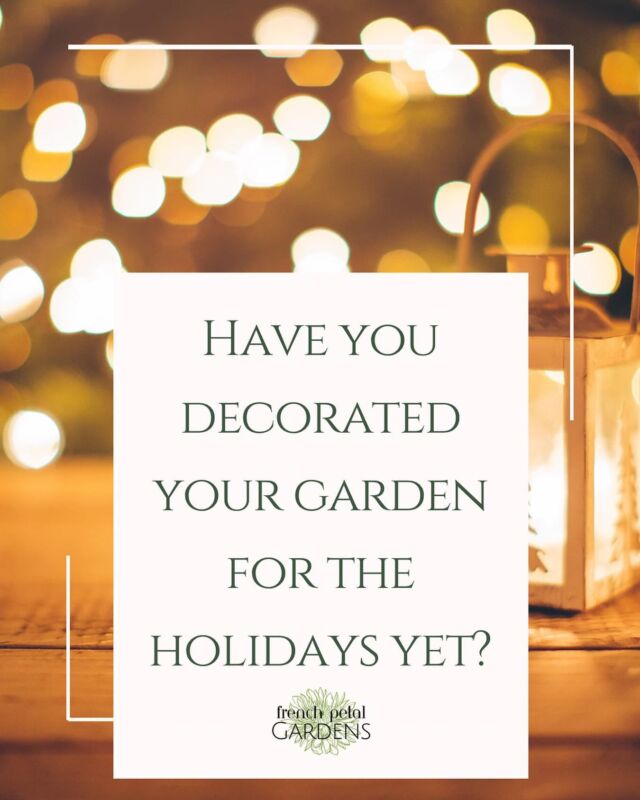Ever wondered how to create naturalistic gardens where every step reveals new colours and textures that flow together seamlessly? Colour in naturalistic gardens is both an art and a science and is one of my favourite parts of naturalistic garden design. Today I’m sharing 5 design secrets to get you colourful naturalistic gardens. Whether you’re starting from scratch or refining an existing garden these will turn your space into a stunning ever changing garden.
Related Article: Why Naturalistic Gardens Speak to Us Deeply
Quick Summary
- Embrace the seasons to have colour all year.
- Use colour blocks for impact.
- Layer textures for colour and movement.
- Anchor with neutrals to balance bold colour and harmony.
- Colour flow to guide the eye and unify the space.
{Related Product: Check out our Year-Round Color Garden Template, thoughtfully designed to keep your garden lively and colorful with minimal maintenance.}
Naturalistic Planting Design
Naturalistic planting design is all about creating a garden that looks like a seamless part of the natural world. This means embracing the beauty of chance and the charm of the wild, so your garden looks like it’s been there forever, evolving naturally over time.
One of the basic principles of naturalistic planting design is the use of plant communities. In the wild plants grow in groups that support each other, creating balanced ecosystems. By mimicking these plant communities in your garden you can create depth and complexity that feels both natural and intentional. This will not only make your garden look good but also attract pollinators, birds and other wildlife, increasing the biodiversity of your space.
Another key element is living mulch. Unlike traditional mulch, living mulch is low growing plants like sedges or creeping thyme that cover the soil. This living layer will suppress weeds, retain moisture and provide a habitat for beneficial insects. It will also add a continuous flowing texture to your garden, making it look more naturalistic.
Use native plants, ornamental grasses and perennials in your design. These are adapted to your local climate and soil conditions so are more resilient and low maintenance. Plus they add to the natural look of the garden and blend in with the surrounding landscape.
Embrace Seasonal Colour Transitions with Perennials for Year Round Interest
One of my favourite things about naturalistic gardening is how the garden evolves naturally with the seasons. A perennial garden designed for biodiversity and ecological resilience will enhance this. Instead of one peak bloom period think of your garden as a living canvas that changes throughout the year.
- Colour Waves: Think early spring bulbs and delicate flowers into summer colour, then autumn colour and finally winter grasses and seed heads. Each season adds a layer.
- Choose Plants with Sequential Bloom Times: Choose plants that bloom at different times to have colour all the time. This will keep your garden looking interesting and there will always be something new to see.
color. This approach keeps your garden visually interesting and ensures there’s always something new to appreciate.
Planting for Naturalistic Gardens
Choosing the right plants for your naturalistic garden is key to a beautiful and connected space. Start with native plants – those that occur naturally in your area. Native plants are adapted to your local conditions, need less water and care and support local wildlife.
When choosing plants consider the climate and soil conditions of your garden. Different plants have different needs for sun, water and soil type. By choosing plants that are suited to your garden conditions they will thrive and contribute to a healthy ecosystem.
A naturalistic garden is all about diversity. Mix different plant shapes, sizes and textures to create interest and complexity. Think about how plants will interact – tall grasses swaying in the breeze, low ground covers spreading out and perennials popping up. This will not only make it look good but also mimic the diversity of the natural world.
Remember it’s about creating a garden that feels spontaneous and free but harmonious. By choosing plants that work together and thrive in your conditions you’ll have a naturalistic garden that looks and works.
2. Create Focal Points with Bold Colour Blocks and Ornamental Grasses
Naturalistic gardens don’t have to be messy. By creating colour blocks and combining plants you can add structure to the garden without losing the wildness.
- Choose Dominant Colours: Choose a few colours for each section of the garden. For example use cool purples, blues and greens for a calming area and warmer reds and oranges for another zone.
- Plant in Groups: Instead of scattering colour everywhere, group plants of the same colour for a bolder effect. Grouping also mimics nature’s way of growing plants in clumps and adds to the naturalistic feel of the garden.
Tip: If you’re new to colour blocking start with one area like a path or patio to get the hang of it.
Creating a Naturalistic Garden
Creating a naturalistic garden takes thought but the end result is worth it. Start by assessing your garden space to understand its conditions. Test your soil, observe the amount of sun different areas get and note any existing plants or features you want to include in your design.
Now you have this information start planning your garden layout. Draw out a design that includes paths, planting areas and focal points. Think about how you want to move through the space and how different areas will interact. The goal is to create a garden that feels cohesive and inviting with a natural flow that guides the eye and encourages you to explore.
Patience is key in naturalistic gardening. Unlike traditional herbaceous borders that can give instant gratification a naturalistic garden evolves over time. Plant your chosen species and give them time to establish and grow. This may take a few seasons but the end result is a garden that feels deeply rooted and connected to the natural world.
Maintenance in a naturalistic garden is less intense than in formal gardens but some care is still required. Regular watering especially during dry spells, occasional pruning to keep plants healthy and periodic fertilising to support growth are all part of the process. Embrace the changes and growth that comes with each season and enjoy the dynamic beauty of your naturalistic garden.
By following these steps you’ll have a garden that looks great and supports local ecosystems and wildlife. Your naturalistic garden will be a living breathing example of working with nature.
3. Layered Textures in Naturalistic Planting for More Colour and Dimension
Naturalistic plantings are a design secret. They affect how we see colour and add depth to the overall look. When you play with different textures you create movement and can make a simple colour palette come alive.
- Soft and Bold Textures: Pairing feathery grasses with plants that have strong bold leaves creates contrast. The soft textures make the bold colours more intense and make each plant stand out.
- Play with Light and Shadow: Plants with airy textures like grasses allow sunlight to filter through and create a magical almost luminous effect. This is especially beautiful at sunrise and sunset.
{Related Article: WHY NATURALISTIC GARDENS SPEAK TO US SO DEEPLY
4. Use Neutrals to Anchor Bold Colours in Your Garden
In a garden full of colour neutrals help to balance. They allow the colours to shine without overwhelming the senses. And some plants like ornamental grasses can be planned in relation to other plants to enhance the design.
- Use Green as a Base: Different greens provide a calming background for the garden. From deep evergreens to soft silvery foliage these greens are a cohesive base.
- Add Subtle Neutrals: Neutrals like white or pale yellow flowers can fill in gaps and create gentle transitions between bold colours. Grasses and muted foliage are subtle anchors that tie the design together.
Pro Tip: Green and silvery foliage can create harmony across different colour schemes even with a mix of colours.
5. Use Color Flow to Create a Harmonious Garden with Plant Communities
Creating color flow and using different planting schemes makes your garden feel bigger and more cohesive. Instead of sudden changes think of how one colour can blend into another.
- Create Colour Pathways: Place similar colours along pathways or across different areas. For example, have purples transition to blues and then to greens and create a gentle gradient.
- Use “Echo Colours”: Repeat colours in different areas to create continuity. This gives the illusion that colours are flowing through the garden.
Try This: Start with a colour you love and repeat it in different shades and plant types. This way you don’t feel too structured.
Conclusion
For me naturalistic gardening isn’t just about creating a pretty space it’s about creating an environment that feels alive and connected to nature. In a post wild world ecological gardening techniques are all about layering in plant design to create diverse naturalistic habitats that mimic those found in nature. Colour in a garden is more than decoration it’s a way to bring out the garden’s personality and rhythm. By following these design principles you’ll create a dynamic colourful space that celebrates each season’s beauty. A garden that grows and changes with time and mirrors nature’s simplicity and complexity.
Ready to add more colour to your garden? Check out our Dynamic Colour Plant Combo for pre-curated combinations that grow together beautifully. And don’t miss our 5-Day Mini Course on Colour in Low-Maintenance Gardens for more on these design principles!
This post has been all about colourful naturalistic gardens
FAQs
- How can I have a low-maintenance naturalistic garden with colour?Focus on drought tolerant plants and layer in seasonally. Native plants are especially helpful as they often require less water and care.
- What colours should I start with if I’m new to colour in a naturalistic garden?Start with one main colour you love, like purples or yellows and add complementary colours. Greens and neutrals are the anchors.
- How do I add colour to shaded areas of my garden?Shade tolerant plants with colourful foliage like hostas and coral bells work well. Some flowers like astilbes also bloom well in low light areas.
- Can I have colour in winter?Yes! Ornamental grasses, seed heads and evergreens add subtle colour and texture to keep your garden interesting even in winter.
- Can I do this in my existing garden?Yes! Start with a few colour clusters or layer in plants in areas that need a tweak. Small changes add up over time. In your own garden you have the freedom to play and adapt and make it your own.
 Dreaming of Your Perfect Summer Garden? Start
Dreaming of Your Perfect Summer Garden? Start
 Don’t let your garden
Don’t let your garden

 Ready to transform your garden into a vibrant
Ready to transform your garden into a vibrant
 C
C![🌸 Transform Your Garden in Just 5 Days! 🌿
Calling all busy professionals! Imagine a vibrant, low-maintenance garden that brings joy without the overwhelm. Our FREE 5-Day Mini Course is here to guide you step-by-step to create the outdoor oasis of your dreams.
✨ What you’ll learn:
🌼 Time-saving garden design tips
🌿 How to choose easy-care plants
⏰ Simple strategies to keep your garden beautiful year-round
Whether you’re a seasoned gardener or just starting out, this course is designed to fit into your schedule and help you create a garden that works as hard as you do.
📖 Sign up now and take the first step toward your dream garden: [Link in bio]
Tag a friend who would love this, and let’s grow something beautiful together! 🌸
#LowMaintenanceGarden #GardenGoals #BusyLifeGardening #FrenchPetalGardens](https://www.frenchpetalgardens.com/wp-content/uploads/sb-instagram-feed-images/467829098_8570250416427957_4568170604682563297_nfull.jpg)
 Why are naturalistic gardens so popular? As T
Why are naturalistic gardens so popular? As T Looking to a
Looking to a
 Don’t let lack of
Don’t let lack of